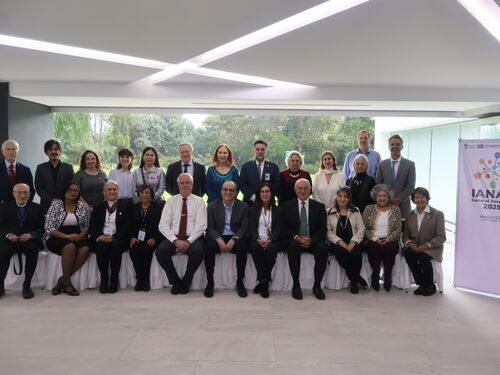Decoding Science: Finding Hope in Failure
Feature Story
Last update May 12, 2021
Can disagreement lead to discovery? In one scientist’s quest to cure cancer, hope rises from the ashes of failure.
In the Scottish mining village where Tom Curran grew up, cancer was a fact of life. Seeing the toll of the disease on those around him, he devoted his life to finding cures.
Over the decades, Curran’s research brought both soaring hope and crushing disappointment. Reflecting on his journey, he finds reason for optimism, as well as some hard lessons about the nature of science.
From hype to heartbreak
For much of his career, Curran’s research focused on the Hedgehog (Hh) pathway, a sort of chemical “phone line” cells use to communicate with each other. This pathway can serve as a conduit for cancer, with some cancers using an overactive Hh pathway to grow and spread. As Curran and other researchers learned more about Hh, they began to wonder: If we could cut that phone line, would it stop the cancer?
In the early 2000s, drugs designed to block the Hh pathway were seen as a panacea, thought to be capable of treating up to one-quarter of all human cancers. Researchers tested Hh inhibitors in cell and animal laboratory experiments for cancer after cancer — lung, pancreatic, ovarian, colorectal, breast, prostate. In some studies, the drugs appeared to be spectacularly effective, killing all the tumor cells they touched while untreated tumors grew larger. Other studies showed only minor effects but were seen as successful anyway, as researcher perceptions became colored by hope and expectation.
But this success was largely a mirage. It all came crashing down when drug companies started doing the painstaking work of replicating the studies done in academic labs, this time with stricter protocols for factors like the concentration and amount of drug used in tests. When the dust settled, studies conducted by dozens of researchers in models for numerous cancers couldn’t be replicated. Many of the early experiments were, to put it bluntly, wrong.
Blowing past red flags
Curran was working on Hh years before the frenzy. Looking back, he can see that the academic research community ignored a great many red flags, including failed experiments by his team and others. “If you get the result that supports what you want to see, you have a tendency to just forget about the things that don’t fit,” Curran said.
To test the notion that blocking the Hh pathway could stop cancer, researchers found cell cultures and animal models purported to be Hh-enhanced, identified drugs to block the pathway, and mixed and matched until they found combinations that appeared to work. But researchers had never developed a consistent way to define what an overactive Hh pathway was, and it turns out that most of the cells and animal models they were using simply didn’t have one. The drugs were working, but it wasn’t because they were blocking the Hh pathway. It was because researchers were bombarding the cells with extremely high doses, much higher than would be feasible for actually treating cancer in people.
To develop drugs from basic science to clinical use, pharmaceutical companies conduct a battery of tests, repeating what academic researchers have done and adding new experiments to get a full picture of the drug’s effects under different conditions. This process helps ensure drugs have a reasonable chance of success before they’re brought to clinical trials. It’s also what unraveled the Hh inhibitor hype.
“Studies got done that would not have gotten done in academia,” said Curran. “Taken together, the body of work was really consistent and useful, but it wasn’t reproducing all of those academic labs’ work.”
Rising from the ashes
It took years of work, and many heated debates, for the academic research community to understand how so many studies could produce what essentially amounted to one giant false positive result. In addition to using ill-suited cells and models, researchers discovered there were intricacies of mouse genetics and the tumor microenvironment at work that hadn’t been previously understood.
While the vast majority of these earlier studies failed once subjected to the rigors of pharmaceutical testing, a few rays of hope glimmered on. Hh inhibitors seemed to be effective against two cancers, basal cell carcinoma, a form of skin cancer, and medulloblastoma, a childhood brain cancer. After more testing, companies started clinical trials.
A rocky road to success
Like early academic work, clinical trials can bring false hope. Many patients enrolled in trials with little evidence that Hh inhibitors would work for their cancer, or found that the drugs worked only temporarily, Curran said. In addition, some of the drugs were discovered to hinder bone development in children, an effect that was reported in studies with mice but not seen in adults, causing lifelong disabilities.
Researchers continued to refine the drugs and treatment protocols, and Hh inhibitors eventually gained FDA approval for treating advanced or metastatic forms of basal cell carcinoma. The drugs are also being evaluated for a subgroup of medulloblastoma patients. Given their relative rarity, Curran says these cancers would not likely have attracted much attention from the pharmaceutical industry were it not for the excitement — albeit mostly unwarranted — around his early work on the Hh pathway.
While the journey was convoluted and beset with frustration, Curran says Hh inhibitors ultimately helped transform the field of childhood brain cancer. This development has been particularly meaningful for Curran, who has spent much of his career at St. Jude Children’s Research Hospital and is now at Children’s Mercy Kansas City, places where the toll of childhood cancer is a daily reality.
“A lot of those patients have benefitted and have options now,” said Curran. “I feel very good about that.”
Lessons from the ‘fog of war’
The idea of precision medicine — tailoring treatments to the particularities of a specific patient’s disease — has gained a lot of attention in recent years. By nature, these cures work in some people and not in others. It takes time and repetition — essentially, a lot of trial-and-error — to find the patterns.
“These were the dynamics going on in the early days of the field, and there were a lot of problems with reproducibility and replicability and disputes among labs,” Curran said. “But it created a debate environment that encouraged people to try new things, to ask ‘Why is this patient different? Why is it not working here?’”
It’s an imperfect process, but with sufficient rigor and transparency, it can work. Curran sees his story as a cautionary tale for scientists seeking to make the next big medical breakthrough: See the data as they are, not how you wish them to be.
“The path to drug development is not straightforward. You go through this fog of war; you think you’re heading in the right direction but you don’t actually know until the smoke clears,” Curran said.
Grounding research in humanity — and humility
The experience has profoundly affected Curran’s career. For a time, he had trouble getting papers published and getting work funded. Eventually, he found fruitful new research avenues, as well as a new perspective on the way scientists think and learn.
“The human side is missing in a lot of our education,” Curran said. “For me, it changed everything. We have to have the human dimension front and center.”
Even though studies in cell lines and animal models are crucial to generating leads for new medicines, cells and mice are not people. Curran urges researchers to stay cognizant of how basic research relates to real patients, and to recognize the limitations of their work.
“Scientists are people, too. This unconscious bias — it’s real,” Curran said. “You get so invested in a project and your desire to do something, especially when you’re trying to help people. You really get drawn into that.”
With careful research methods, open channels of communication, and a bit of humility, Curran sees opportunities to avoid the mistakes of the past and build better science, and better cures.
Featured Publication
Consensus
·2019
One of the pathways by which the scientific community confirms the validity of a new scientific discovery is by repeating the research that produced it. When a scientific effort fails to independently confirm the computations or results of a previous study, some fear that it may be a symptom of a la...
View details




